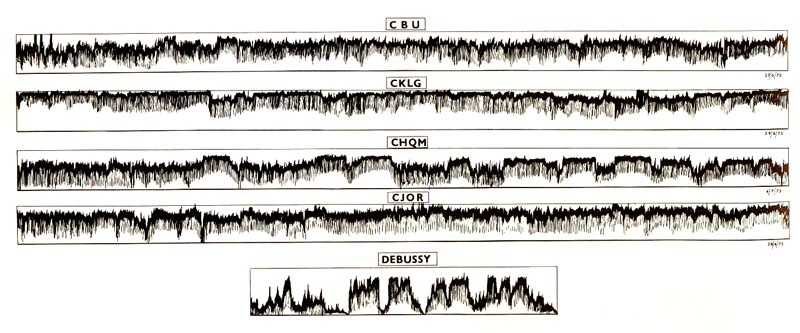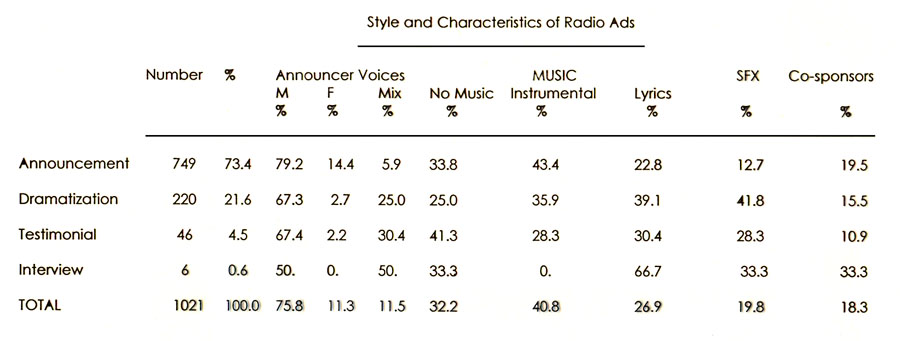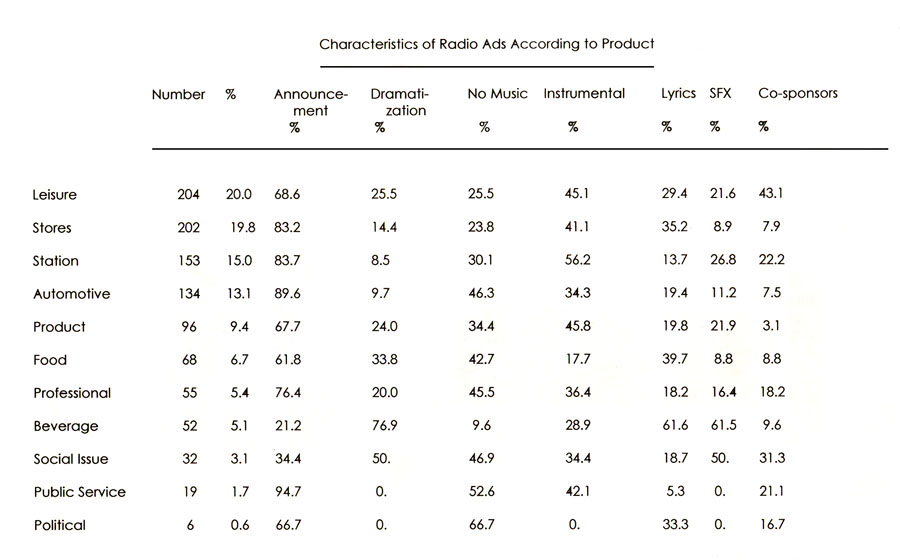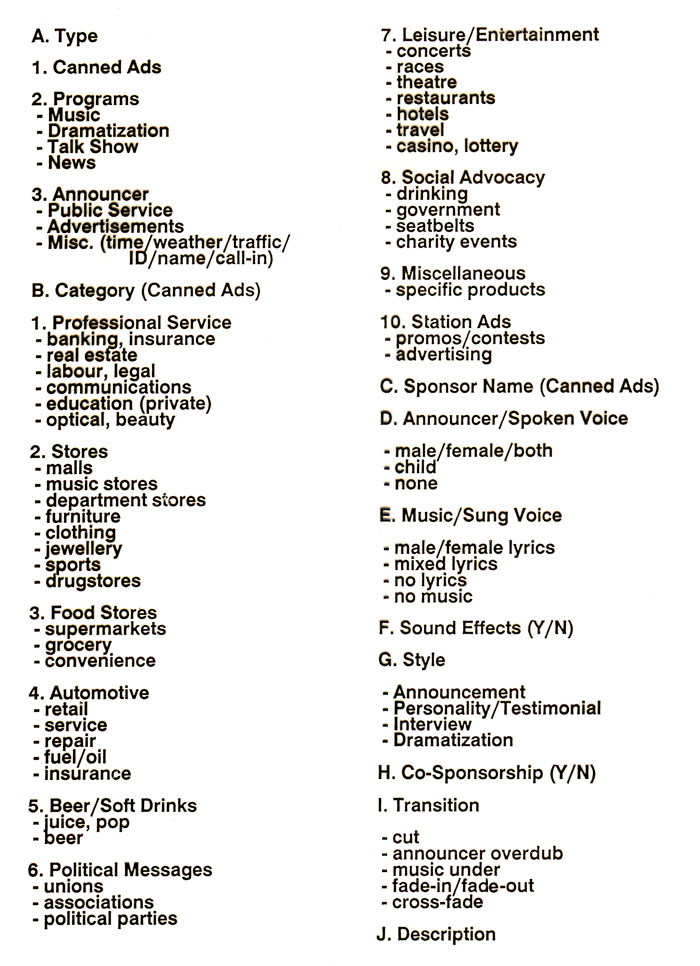Historical Examples and Timeline:
CKFC, Vancouver ca. 1937
CJFC Kamloops, ca. 1938
CNRV studio ca. 1925
CNR lounge car after 1923
Broadcast of a speech by W.L.M. King, Montreal, Oct. 19, 1925
Broadcast by Rev. William ("Bible Bill") Aberhardt, the founder of the Social Credit Party, broadcasting over CJCA, Edmonton Prophetic Bible Conference, Strand Theatre, August 29, 1937
Ads for Radio Equipment (collected from Macleans magazine by Lisa Czembor)
1926:Stromberg-Carlson: "Fidelity of Tone"Stromberg-Carlson: "The Lost Chord"
DeForest & Crosley: "Expert Guidance"
Radiola (Canadian General Electric): "TONE: The Product of Radio's Master Minds"
King Radio: "For Her Lonely Hours"
Fada Radio: "Fada Harmonated Reception"
Williams & Sons: "Magnavox Single Dial Radio:
1930:
Philco: "Unbalanced Radio vs Balanced Radio"Stewart-Warner Radio: "The Music is There ...." (violin)
Stewart-Warner Radio: "The Music is There ...." (singer)
Radiocraft Corporation: "Bosch Radio"
1936-1939:
Canadian Marconi Company: "Marconi: The Greatest Name in Radio"General Electric: "I'm thrilled with my new G-E Radio"
Westinghouse World-Wide Radio: "Presto-matic" (1938)
General Electric: "The Sensation of Radio: Touch Tuning" (1938)
Stewart-Warner: "Are You Missing Tone Realism" (1939)
The Skeptics:
The world comes into my room, kicks the silence about, smashes it to smithereens, builds little cobweb bridges so your thoughts can cross to Germany and Russia, to France.
Emily Carr, Hundreds and Thousands: The Journals of Emily Carr, Toronto/Vancouver, Clarke, Irwin and Company, 1966, p. 232.
And in fact, to my indescribable astonishment and horror, the devilish tin trumpet spat out, without more ado, a mixture of bronchial slime and chewed rubber; that noise that owners of gramophones and radios have agreed to call music. And behind the slime and the croaking there was, sure enough, like and old master beneath a layer of dirt, the noble outline of that divine music. I could distinguish the majestic structure and the deep wide breath and the full broad bowing of the strings.
Herman Hesse, Steppenwolf, Bantam Books Edition, New York, 1969, p. 241.
It takes hold of some music played where you please, without distinction, stupid and coarse, lamentably distorted, to boot, and chucks it into space to land where it has no business to be; and yet after all this it cannot destroy the original spirit of the music; it can only demonstrate its own senseless mechanism,.... And now you hear not only a Handel who, disfigured by radio, is, all the same in this most ghastly of disguises still divine;... When you listen to radio you are a witness of the everlasting war between idea and appearance, between time and eternity, between the human and the divine. ....projects the most lovely music without regard into the most impossible places, into guzzling, yawing and sleeping listeners, and exactly as it strips this music of its sensuous beauty, spoils and scratches and beslimes it and yet cannot altogether destroy its spirit....
Herman Hesse, Steppenwolf, Bantam Books Edition, New York, 1969, p. 242, 243
There was almost ceaseless noise and clatter, but the noise was not of crying or of anger and nobody minded the noise to which the sound of a radio was usually added.
Ethel Wilson, Swamp Angel, McClelland & Stewart, Toronto, 1954, p. 43.
This new wife of mine must have been very lonely at times, though she never said so. Once she suggested that we have a radio. This made me vaguely uncomfortable. We all had an idea in those days that radio caused electrical disturbances that had a bad effect on the weather, so that on account of some gigolo with corrugated hair singing 'Ting-a-Ling' or 'You've Got Me Crying Again' in Montreal or Los Angeles, a bunch of good men had bad snow-shoeing all winter.
Grey Owl, Pilgrims of the Wild, Peter Davies, London, 1935, p.1.
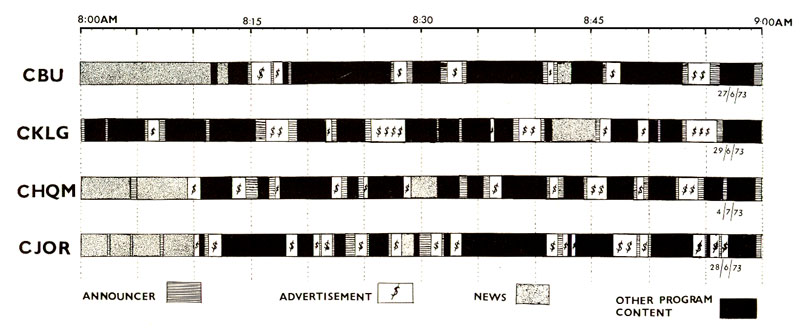
Program structure of 4 Vancouver stations, 1973
Isorhythmic structure of news broadcasts. 1973
Level recordings of 4 Vancouver stations, 1973, compared with orchestral music
Ad Sequences and Ads:
Target Audience: Demographics ---> style of content (music, announcer, products, information etc) ---> formatHolding Power: Structure and "flow"
1970s
Music -->|| Ann. (Time,ID) || Ann. Ad (+lookahead) || Canned Ad || Tease || Ann. Ad -> Ann.Over || Music
M - A - B - C - B - A - M (arch form) sound levels Music -->|| Ann. (Time,ID) || Canned Ad || Canned Ad || Logo || Ann.Over || Music
M - A - C - C* - A - M (back to back form) sound levels and spectrum
CFUN: including ads for Granola Bars, PSA (Canada Post), Alcoholism Awareness
1980s
1990s
KISS-FM (station ad, female announcer)
KPLZ (include TV ads, co-sponsorships)
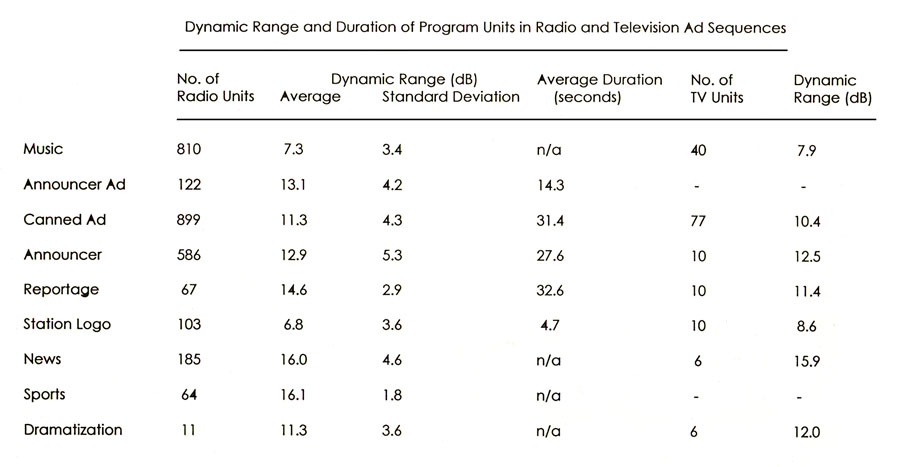
2008
CKCL-FM "Clear FM" 104.9 (Satellite station)
Breaks between songs ("the patch")1970s: Analog, manual cueing by dj
2008: Digital cueing and sequencing
CKCL-FM "Clear FM": canned logo
QM-FM: "Love Songs" station ID
QM-FM: "Playing the most music"
CFMI-FM: "Classic rock" long, chaotic canned station ID & announcer




